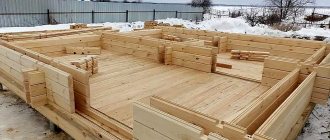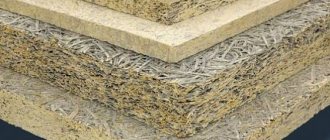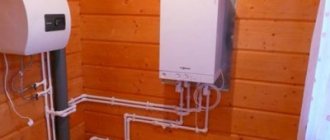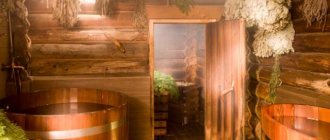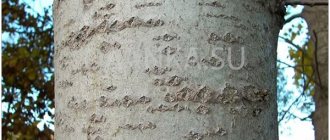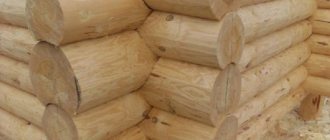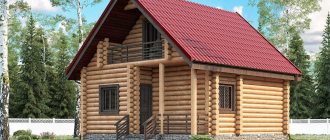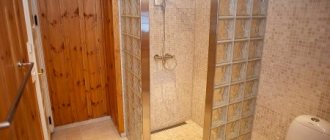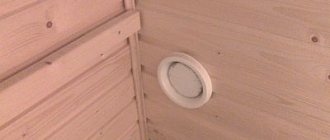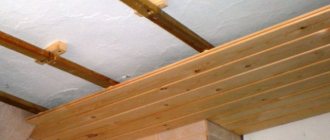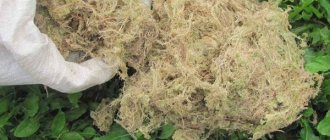Natural raw materials are always valued and are in great demand not only in the field of house construction, but also in other industries. Especially when it comes to wood such as larch or aspen. Many people do not know what material to use to build a bathhouse or finish the floor. The choice of one or another raw material will depend on many nuances, for example, on operating conditions. Larch and aspen have their own advantages, but each has certain properties unique to it. While larch is durable and highly durable, aspen is easy to process.
Properties and characteristics
Aspen belongs to the extensive genus of poplars, the willow family. According to the structure of the trunk, this is a coreless, diffusely woody tree species. In Russia, this tree is found everywhere in the European and Asian parts of the country, from deciduous forests of mid-latitudes to tundra zones.
This tree grows up to 150 years, but the cause of its death is often not age, but rot that affects the core of the trunk, so trees between 30 and 50 years old are usually chosen for industrial felling. During this time, the tree reaches a height of 35-40 meters.
Aspen wood is dense, with poorly visible growth rings, and uniform in structure. The moisture content of the wood in the central part is lower than in the peripheral areas of the trunk. The color of the wood is white, grayish-white, sometimes greenish. In the cut, it is impossible to notice the rays emanating from the center. For some decorative work, such wood is valuable precisely because of its uniformity. After staining or painting, the structure of the wood remains uniform and does not reveal any structural elements.
The moisture content of a freshly cut tree is about 82%, while the maximum moisture content of this wood (when soaked) reaches 185%. With high atmospheric humidity, aspen quickly absorbs water, but also quickly loses it when drying, which is a positive quality.
In terms of resistance to biological factors, wood belongs to the lowest, fifth class (according to the ISO EN 350-3:1994 standard).
There are a total of five classes in the above standard. The first class of resistance includes, for example, Indian teak and Australian eucalyptus. Larch and oak are classified as class 2 in terms of wood stability. In Russia, the resistance of a tree to the effects of fungi and mold is determined in dimensionless conventional units. According to the Russian classification, resistance to fungi is 1.2 units for mature wood, and 1 for aspen sapwood.
Varnishes for lining
Varnishes are divided according to the substance that makes up the base:
- Acrylic;
- Polyurethane;
- Acrylic-polyurethane;
- Alkyd;
- Water-based.
Acrylic varnishes are universal. Will not allow dirt to concentrate on the surface. Dries quickly. Negative property - they begin to emit a specific odor when heated.
Varnishes containing polyurethane are suitable for treating indoor and outdoor surfaces. There are translucent compositions and darker ones - tinting. Lacquered panels will not turn yellow.
A combination varnish containing both acrylic and polyurethane gives some shine to the coated products. Protects against fungal colonies and mold.
Alkyd compounds will protect the wood from moisture. The negative property is the long drying time and unpleasant odor, so the room will have to be ventilated for several hours. Complete drying is guaranteed after two days.
Water-based varnishes are almost completely odorless, dry very quickly, and most importantly, there is no harm to health. In addition, water-based varnishes do not support combustion and do not emit harmful substances when heated.
If desired, you can use compounds and waxes - you can buy them or prepare them yourself.
When purchasing any varnishes and paints for residential premises, you should carefully read the instructions on the can. There must be a note stating that the composition is allowed to be used inside houses and apartments. If necessary, it is better to consult the seller.
In most cases, the surfaces will have to be primed before varnishing.
A number of craftsmen prefer to use factory-made varnishes and impregnations based on oil and wax. They penetrate deep into the pores of the wood, flow into all microcracks, and provide protection from moisture and mechanical stress.
For example, alkyd-oil solutions have a beneficial effect on the properties of aspen lining, protecting it from cracks and deformation. It is believed that treating wood with impregnations and varnishes can extend the life of products by 3-4 times.
Varnishes are applied in accordance with the rules:
- On dry and clean surfaces;
- After applying the primer;
- The ends are painted first;
- Temperature not lower than +5 degrees;
- Humidity not less than 70%.
An antiseptic is applied before varnishes. In addition to a brush and roller, you can use a spray bottle; with good skill, you will get the most even surface without defects.
For the dressing room or kitchen, water-based or wax varnishes are suitable.
In some cases, aspen lining is coated with special fire retardant compounds. There are combined mixtures: fire protection + antiseptic.
When finishing wood products, common mistakes occur. Firstly, the use of cheap products from the Chinese chemical industry, which can cause harm. It is not recommended to purchase varnishes, paints, impregnations and primers in markets without the appropriate certificates.
Secondly, the type of impregnation/primer does not match the finishing varnish or type of paint. Otherwise, high-quality coverage will not be achieved.
Industrial felling of aspen
The international standard for industrial wood is called DIN 4076. Aspen wood belongs to group AS.
In Russia, industrial cutting of trees is carried out in wild forest plots, which are then restored naturally. In Western Europe, in recent decades, trees for industrial felling have increasingly been grown in nurseries. These are the so-called short-cycle forest nurseries. They grow primarily fast-growing tree species (poplar, aspen). This approach to environmental management makes it possible to preserve natural forests and grow wood of the required parameters.
At home
Despite its ubiquity (aspen can be found throughout Europe and, partly, Asia), its low cost and ease of processing, aspen is rarely used for the construction of houses and farm buildings.
For a long time, people have treated it with some distrust, considering it a weed and unnecessary plant. In addition, according to ancient legend, aspen was the very tree on which Judas Iscariot, who betrayed Jesus Christ, hanged himself by selling him for thirty pieces of silver, so it was believed that the wood of this tree has negative, dead energy.
These beliefs can be treated differently. However, there are very real arguments against using aspen wood as a building material for the construction of houses.
These include:
- Insufficient quality of raw materials. Indeed, in order to find a timber suitable for the construction of a log house, you will have to spend a lot of time. As a rule, no more than 10% of the material from this tree has the required characteristics.
- Susceptibility to shrinkage. Since aspen has high natural humidity, its wood can be used for construction only after thorough drying. However, during this process it is greatly turned out and twisted.
When building houses from aspen, the quality of the timber used is of decisive importance, especially its humidity, which should not exceed 20%. Some experts recommend using aspen only for laying the first crown of a house made of timber, since it resists rotting well and is characterized by increased strength, and the frame itself should be made of pine.
This move will reduce the cost of construction, since the cost of selected quality aspen timber is quite high - from 10,000 per cubic meter. meter and above.
Features of wood processing
If you look at an aspen trunk in a cross cut, you can see that the wood has a nuclear-free structure. In general, the wood is soft compared to other deciduous trees, its density is 400-500 kilograms per cubic meter (with a humidity not exceeding 15%).
Aspen timber, like other lumber, is capable of absorbing large amounts of water, both in the atmospheric air and under water, which is a negative characteristic of this wood. Aspen wood dries slowly, over several months; when dried, it practically does not crack and does not change its original shape (does not warp). Dried wood splits easily in the longitudinal direction. In the outer part of the trunk, the wood has a high density, so wear rates during operation of aspen products are high.
The humidity in the central part of the tree trunk is much lower than in the peripheral areas. Lumber manufacturers take this feature into account when organizing the drying of timber and round timber.
This wood can be easily processed with mechanical and sharp hand tools, it is easy to saw and cut, it is easy to peel, split and mill. It is easier to process wet, not completely dry wood. When polishing wood, it is not easy to achieve a good smooth surface, although it is uniform and there are no obvious annual rings or knots in the wood. Aspen takes well to impregnation and staining. Dried wood is not difficult to glue; it can be used to make furniture, the parts of which are connected using screws or nails.
Steam room lining. Peculiarities
Boards and lining (linden or aspen) are well suited for finishing the “insides” of baths and saunas.
What is good about lining (aspen) for finishing steam rooms and dressing rooms:
- Does not emit resin, which distinguishes it from coniferous lining;
- Does not burn the body due to low thermal conductivity;
- Very moisture resistant material.
After treatment, it is not afraid of damage by fungi or bacteria, and does not rot.
Some varieties may turn slightly black over time from exposure to moisture.
Features when covering baths and saunas: it is recommended to place the lamellas horizontally - with the tenon pointing towards the top (that is, the sheathing bars should stand vertically). This is necessary so that condensation does not accumulate at the joints, and air will circulate freely between the frame elements, and the external walls will become less damp. In addition, if deformation of the log house occurs, it will be enough to remove the excess panel or add a new one - if the lamellas are horizontal, this will not be difficult.
One of the disadvantages of the vertical arrangement is that if the central board(s) are damaged, you will have to disassemble the entire wall, but the advantage is the speed and ease of assembly, even alone.
When installing the frame, it is recommended to use stainless steel screws; with high humidity, the metal quickly rots. To lower the ceiling, special galvanized hangers are used, and lathing is attached to them. The lathing is treated with an antiseptic before assembly.
You can completely assemble the frames of the walls and ceiling, and then finish everything together with clapboard. Or do the ceiling completely first, and then move on to the walls.
To insulate the steam room, it is better to use mineral wool. For the outer layer, it is recommended to use a thin foil vapor barrier, preferably with foil on both sides.
The main thing is to think through the design of the stove and ventilation before finishing work.
To fix the lamellas, be sure to use clamps (special brackets for fastening). They are more difficult and take longer to work with, but their presence will make it very easy to disassemble the wall if necessary. Hammering nails and screwing self-tapping screws into the lining is not recommended. It is advisable to use nails and screws with small heads.
When the lining is not long enough, it is increased. The lamella is mounted on the sheathing, the length of the additional piece required is measured, it is cut off (can be selected from other scraps) and attached end-to-end to an already fixed panel.
When assembling a wall, you should check the parallelism of the boards of the already assembled side, for self-checking, so as not to redo the whole work later.
A gap of 2 cm should be left between the floor and wall panels (as well as between the ceiling and walls). Some craftsmen also install compensation gaps in the corners, covering them with decorative slats or plinths.
When installing vertically, you should start from the corner, when installing horizontally, from the top.
Use of aspen in industry
The main consumers of aspen are the construction industry. Various lumber is produced from it: round timber, timber, boards, particle board, fiberboard, peeled veneer. Bathroom equipment is made from timber, for example, benches, ladders, shelves, grates and pallets. Aspen slats are used to produce packaging boxes and containers for storing and transporting goods. Until recently, before the advent of computer technology, drawing drawing boards were made from dense white aspen.
The shavings are a by-product of production and are used as fuel for thermal power plants, as well as insulation in rural and country construction. Wood shavings used for combustion at thermal power plants are considered an environmentally friendly material, and wood is a renewable natural resource. For heating private houses, chopped wood, scraps from production, and fuel pellets are used.
Aspen wood is a raw material for the production of cardboard and paper. In the shoe industry, crushed aspen shavings are used as a material that absorbs moisture well. Peeled aspen veneer is used to make plain and laminated plywood, matches, and toothpicks. It is used to make caskets, baskets, gift boxes and packaging. Sliced veneer is used for the manufacture of various household items. Bent, shaped parts of furniture and decorative boxes are made from thin aspen plywood.
When burned without access to air, aspen produces charcoal of good quality. It is used in the chemical industry and for artistic works.
Baths and log houses made of aspen
One of the characteristic qualities of common aspen is the high hygroscopicity of its wood, which is why it is often used for the construction of baths and wells.
The main advantages of bathhouses built from aspen timber include:
- Durability and reliability. With high-quality drying of aspen timber used for the construction of a bathhouse, this material gains strength comparable in strength to concrete. Moreover, these characteristics improve even more over time.
- Good moisture resistance. Unlike many trees of other species, aspen does not rot or deteriorate when exposed to water.
- No resinous secretions. Thanks to this, aspen baths do not require additional interior finishing.
- Pleasant unobtrusive aroma. The wood of this tree has a light and pleasant smell, which does not change its intensity when this material is heated.
- Low price. Due to the low cost of raw materials (for example: a cubic meter of unedged aspen board costs approximately 4000-4300 rubles), the construction of bathhouses from aspen is very inexpensive.
- Presence of bactericidal qualities. Even in ancient times, people noticed that the water in wells built from aspen remained clean for a long time, did not rot or bloom, so dishes and utensils were also made from this wood. And in the bath, thanks to the heating of the wood, these qualities were enhanced even more.
Photos of bathhouses and log cabins built from aspen timber
Bathhouse No. 1
Bathhouse No. 2
Log house No. 1
Log house No. 2
Log house No. 3
Advantages of the material
Construction using wood has its advantages and disadvantages. The main advantages when choosing such material will be:
- Environmental friendliness. The most compelling argument in favor of wood is environmental friendliness. Some modern materials can emit fumes of heavy metals and other chemical elements, which will adversely affect the health of home residents.
- Maintainability. Parts made from wood will be fairly easy to repair if they break or wear out.
- Strength and resistance to many external factors, which makes the service life of wood products long. When properly processed, this material will serve without fail for many years.
- Ease of processing.
- Poor thermal conductivity.
- Good sound insulation properties.
This material is highly flammable
. Quite an extensive list. However, there are a small number of disadvantages:
- The properties of the material strongly depend on the conditions in which the tree grew. Because of this, it can be difficult to choose a quality copy.
- Changes in size due to exposure to humidity and dryness. But this shortcoming can be easily corrected by processing.
- Highly flammable.
The high cost associated with the difficulty of obtaining high-quality wood cannot be ignored.
Effect of thermal conductivity
The thermal conductivity of wood directly determines its ability to maintain room temperature. Cedar takes the leading position in heat conservation. Spruce, larch and other pine species lag behind a little. Everything depends directly on the size of the log (its diameter), the moisture content of the material, the fit and insulation of the joints.
A building made of pine with a thickness of only 10 cm can be compared with a brick wall 58 cm wide or a reinforced concrete wall 113 cm wide. A house built correctly from wood will be quite compact and warm. Therefore, during construction, you need to take into account the table of thermal conductivity of wood.
The heaviest coniferous tree, larch, is the winner of pine in terms of thermal conductivity. It has a lower coefficient.
The thermal conductivity of wood, which allows it to retain heat, is not the only advantage of larch. The structure of this material is moisture resistant and quite beautiful.
Pine is the most common and frequently used wood for construction. Moreover, from the financial side of the issue, this is also the most budget option. Pine is easy to process and can decorate a house or bathhouse with its appearance.
Lumber
Since aspen wood raw materials have a number of specific characteristics, they cannot be classified as universal materials that are widespread in construction and industrial production. Therefore, lumber from this tree, for the most part, has limited use.
One of the advantages of lumber is its low cost, however, this only applies to “rough” wood, which has a fairly large rejection rate of about 60-80%. For exterior work, the upper part of the tree is used, since its middle often rots during growth.
Lumber is subject to severe shrinkage and changes in volume and weight during drying, so it is not of great value as a building material.
Furniture panels made of aspen
People have been using furniture made from natural wood since ancient times. And today it does not lose its relevance and popularity. For its production, wood of various types is used, including common aspen.
Depending on the size of the pressing equipment used, panels, facade elements, decorative panels, etc. are made from it. In this case, the initial wood raw material, which is a 30 mm board with a moisture content of 80%, undergoes pre-treatment: it is impregnated and dried for 70 hours to a moisture content of 10%.
General information
How to competently compare materials
Naturally, time and financial resources and universal solutions. For example, build a sauna frame from cedar, preferably Canadian, and use African oak to decorate the steam room. Even with a correctly drawn up project, steaming in such a bathhouse is not much more comfortable and better than in a simple one, but it will last 10 times longer than an aspen log house or a building made of larch.
Not such a box will be extremely expensive. There is a possibility that with the money spent on sauna installations, it would be better to build 4 full-fledged saunas from linden and cedar pine wood. Wood that is used for bath construction can be divided into the following 3 categories:
- Wall block, or bars.
- Material for arranging the wettest places in a bathhouse.
- Finishing materials for shelves, wall surfaces of steam rooms, as well as bath accessories.
This division did not appear by chance, and usually a certain type of wood will perform best in certain conditions. For example, larch or oak are better suited than alder or pine for a bathhouse if we are talking about building a log house or box structure. At the same time, heavy acacia, oak or birch should not be used to decorate the walls of the steam room. The denser the wood, the more it will burn the skin, and birch boards can emit bitterness.
What you should pay attention to
When selecting a material for construction, in addition to cost and tactile perception and the wood surface when touched, you need to pay attention to the following 3 important points:
- Decorative aroma and quality.
- Resistance of the material to high temperatures and moisture.
- Wood workability.
In all categories there are certain outsiders and leaders. For example, aspen and linden have the best workability, while larch and cedar are considered to be moisture-resistant, and the most beautiful and pleasant to touch are abacus and alder. Naturally, there are universal wood species, the qualities of which are no better than those of the leaders, but they can be used to a certain extent for all bath parts. Such materials include larch, aspen and cedar.
